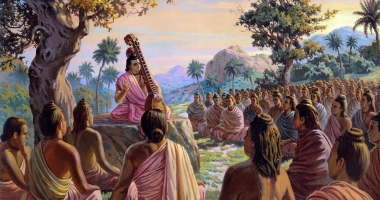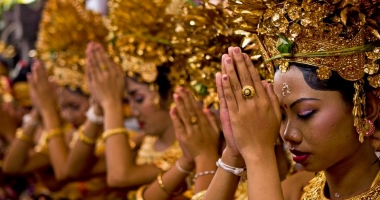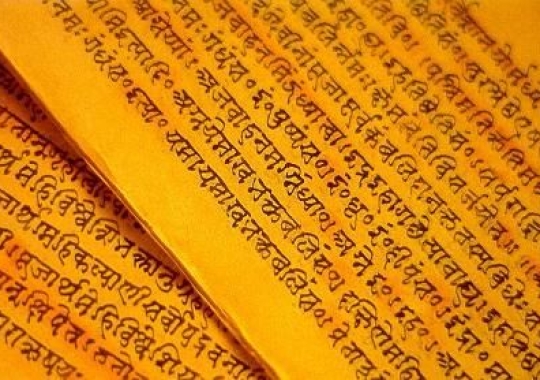The fourth and final of the revered text of the Hindu dharma, the Vedas, the Atharva Veda, in short, is depicted as “knowledge storehouse of Atharvāṇas” Atharvāṇas meaning, formulas, and spells intended to counteract diseases and calamities, or “the procedures for everyday life”.

The words of Rig Veda put to music, and are to be sung rather than to just be read or recited.
Sama Veda, also the Veda of Melodies and Chants, is the third in the series of the four principle scriptures of Hinduism – Four Vedas. The Sama Veda, divided into two major parts, first to include the four melody collections, or the Saman, the songs and the latter the Arcika, or the verse books a collection (Samhita) of hymns, portions of hymns, and detached verses. A liturgical text, relating to public worship, all but 75 verses of the total 1875 is derived from the Rig Veda.
All Stories

Rig Veda, one of the oldest texts of the Indo-Aryan Civilization still extant, is an ancient Indian collection of Vedic hymns.
Two Sanskrit words Rig and Veda constituting it translates to ‘praise or shine’ and ‘knowledge’ respectively. A collection of 1,028 hymns and 10,600 verses in all, organized into ten different Mandalas (or the books; Sanskrit), it is the principal and oldest of the four Vedas.

Sanskrit is a classical Sanskrit language of India. The Sanskrit consonants are a very important feature of the language. The Sanskrit consonants are known as a 'rich treat' for the Sanskrit student. The sounds in Sanskrit words are articulated much differently from the sounds in other ancient languages and this is often taken for granted by students of Sanskrit.'

According to the Hindu tradition, Sanskrit originated from Lord Brahma who is considered as the creator and also the preserver of the universe. The primary meaning of Sanskrit is 'to speak'. It is believed that the primary creation of Hinduism took place at the place called Deva (meaning "devoid, empty"). From this point of origin, Sanskrit evolved into three variants namely Patanjali's mantra (also called Upanishad), Khajuraho's mantra (also known as Kuraladi Praja) and Yoga mantras.


